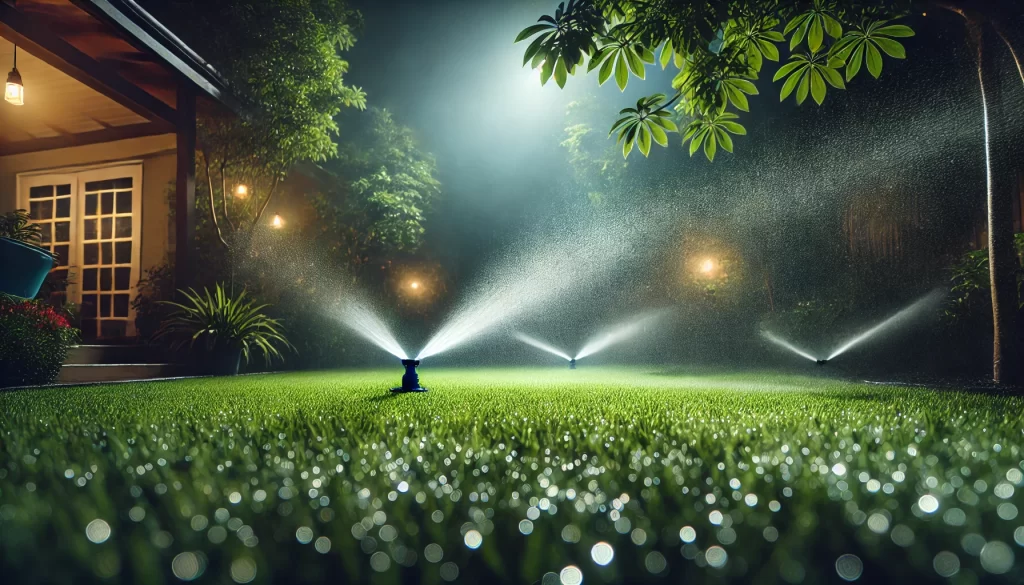The lawn is a vital part of any garden. To keep it green and healthy, it’s necessary to follow specific care routines that include proper watering, fertilization, and detecting potential nutrient deficiencies. Below, we offer a detailed guide to help you keep your lawn in optimal condition throughout the year.

Lawn Watering: When and How Much Water to Apply?
What are the Best Times to Water the Lawn?
The right time to water your lawn is crucial to avoid wasting water and potential diseases. The best time to water is early in the morning, between 5:00 and 9:00 a.m. At this time, evaporation is minimal, allowing the water to reach the roots before the sun heats the soil too much. Watering at night is not recommended as it can promote the appearance of fungi due to prolonged moisture on the lawn.

How Much Water Does the Lawn Need?
The lawn generally needs between 2.5 cm and 3 cm of water per week, including rainfall. This equates to about 30 minutes to an hour of watering three times a week, depending on the type of soil. For sandy soils, shorter and more frequent waterings are recommended, while for clay soils, deeper and less frequent waterings are better.
Seasons When Watering Should Be Avoided
In winter and during seasons of heavy rain, the lawn needs less water. It is important to avoid watering during these times, as excess water can damage the roots and promote diseases. A good indicator is to check the soil moisture: if it is moist about 5 cm deep, watering is unnecessary.

Lawn Fertilization: Nutrition for Optimal Growth
When and Why Apply Fertilizer?
Fertilizer is essential to maintaining a dense, green lawn. The best times to fertilize the lawn are in spring and autumn, when the lawn is in full growth. The amount of fertilizer and type will depend on the specific needs of the soil and the lawn.
How to Detect Nutrient Deficiency?
Symptoms of nutrient deficiencies can manifest in different ways:
- Yellowing: May indicate a lack of nitrogen.
- Slow growth or pale leaves: Possible phosphorus deficiency.
- Brown tips: Could be a sign of potassium deficiency.
Fertilizer and Dosage Table for the Lawn
| Lawn Symptom | Deficient Nutrient | Type of Fertilizer | Recommended Dosage |
|---|---|---|---|
| Yellow leaves | Nitrogen (N) | Nitrogen-rich fertilizer (NPK 20-10-10) | 0.5 kg per 100 m² every 4-6 weeks |
| Slow growth | Phosphorus (P) | Phosphorus-rich fertilizer (NPK 10-20-10) | 0.3 kg per 100 m² every 6-8 weeks |
| Brown tips | Potassium (K) | Potassium-rich fertilizer (NPK 10-5-15) | 0.5 kg per 100 m² every 4-6 weeks |
| Pale color in spring | Micronutrients | Micronutrient fertilizer (Fe, Mg) | Apply as per manufacturer’s instructions |
Additional Tips for Efficient Fertilization
- Avoid fertilizing before heavy rains to prevent nutrients from leaching out of the soil.
- Use a slow-release fertilizer for a continuous supply of nutrients.
- Check the soil pH before applying fertilizers, as incorrect pH can prevent nutrient absorption.
 AgronoBlog – Agriculture Blog
AgronoBlog – Agriculture Blog 


